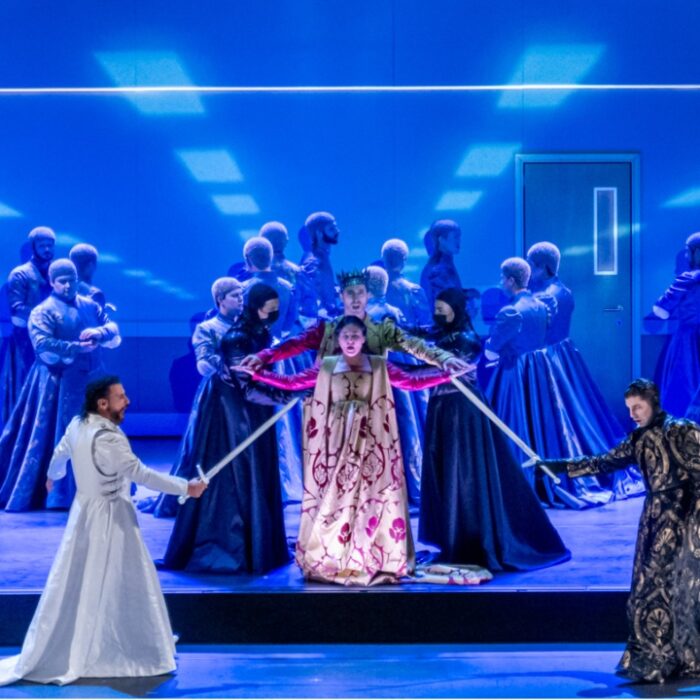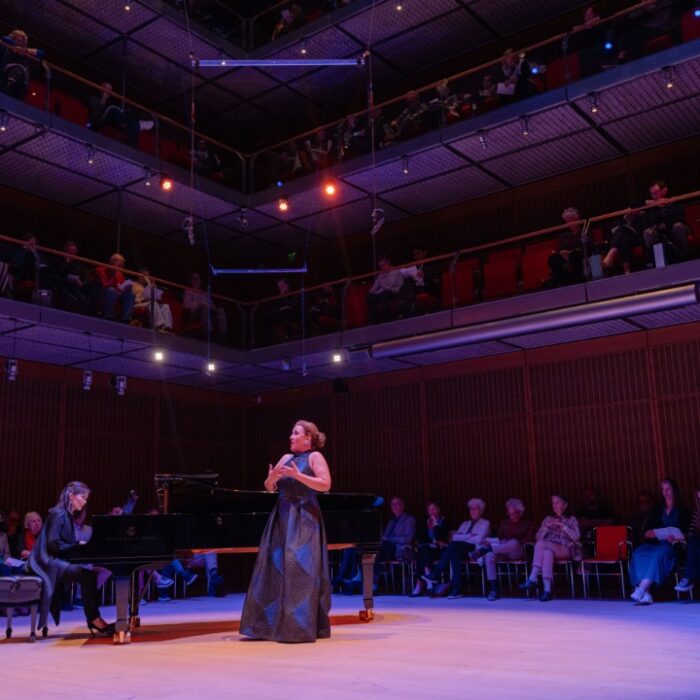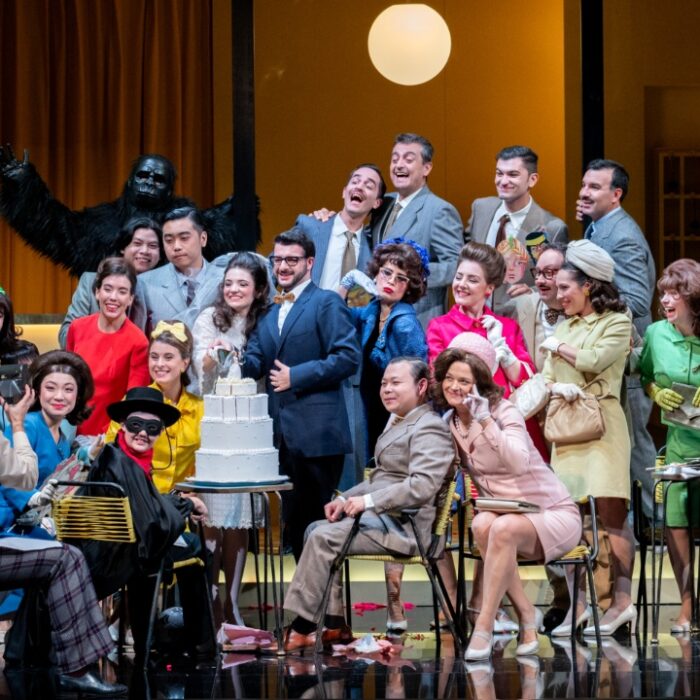
Tanglewood 2019 Review: The Brightness of Light
Renée Fleming Braves Intense Heat, Soars In World Premiere of Kevin Puts’ Masterful Work
By Matt CostelloIt’s not often that the weather takes prominence in a review of any concert. But for this Tanglewood concert, on this Saturday night –anniversary of the moon landing! — an exception must be made.
Because as much as any other element in the evening’s performances, weather — in this case, record temperatures and devastating humidity – also took center stage.
Braving The Heat
If you know the classic Eliel Saarinen-designed “Shed” that hosts the major performances at Tanglewood in Lenox, you know that it has fine acoustics, a sturdy roof, and is open at the sides for those, um, chilly Berkshire Mountain breezes. Save, this night, no breezes were to be had, and with the temperatures in the 90s, with suffocating humidity, it was a challenge to simply sit in the theater.
But with a capacity crowd drawn by a terrific program, people filled the theater. Sweat dripped, with people looking nearly bleary-eyed.
The program opened with bracing Elgar “Enigma Variations” with Boston Symphony Orchestra Music Director Andris Nelsons conducting. With its ever-shifting moods over the 14 variations the piece is – for me – near unique in the literature. These “variations,” matched to “enigmatic” people in Elgar’s life and the work on the whole has a playfulness that often balances a delicate (and yes, summery) quality with surprising power and force.
The performance was magnificent, as one might expect for the BSO. This is music –with its shimmering strings and triumphant brass — that the orchestra was born to play. But while sitting in sweltering night air, I had to look at the musicians: the violins producing such beautiful tones, the great trombones providing a stirring power, the other soloists — all shining at their own highlighted sections; in long-sleeved shirts, as well! And yet the troupe seemed unfazed.
Soaring Soprano
The second piece on the program was the world premiere of Kevin Puts’ piece “the Brightness of Light.” Based on a shorter piece commissioned in 2015 by the Eastman School of Music, “Letters from Georgia O’Keefe,” the expanded work is close to being a one-act opera. Puts himself dubs it an “orchestral song cycle.”
The amazing Renée Fleming sang as Georgia O’Keefe, as Puts shaped his music to match the artist’s words, based on the decades’ long correspondence with photographer and gallery owner, Alfred Stieglitz.
That correspondence is all about the meeting of two passionate, artistic people, where love and art are entwined — and where that path does not always go smoothly. As Stieglitz, Rod Gilfry’s rich baritone was a warm match to Fleming’s soaring, oh-so-sweet and powerful singing of the challenging music. Puts provides many sections for Stieglitz’s “voice” to be heard, and Gilfry made the most of them.
And as if this piece itself — about brightness, light — could work its own magic, there was suddenly some relief. A hint of breeze, a bit of spattering of rain. And as the piece went on, it seemed to seduce the atypical climate into relenting, and kept the audience enthralled.
A key to the piece is the back and forth nature of the O’Keefe-Stieglitz correspondence, and it gave “Brightness” both a dramatic and musical power. At the piece’s end, walking out., every one more or less drenched, I heard people say “I loved it.” It is truly rare to hear that for a lot of new compositions.
And as one might expect for such experienced professionals, neither Fleming, who seemed as fresh at the piece’s end as when she began, or Gilfry, seemed fazed as they made both the musical beauty and the story come to life.
Projecting Life
They were aided in this by projections above the stage. Many were representations of O’Keefe’s emerging art. But an equal number were photographic images from the O’Keefe-Stieglitz world, Penn Station in New York, a city building in 1930, and O’Keefe’s retreat and inspiration, Taos, New Mexico.
We hear both the artists age as the music and text tells the tale of their love, their marriage their separation, their passion for art – all of which becomes palpable. We feel that journey within the confines of an hour, and for that Puts deserves much credit.
But we also see those lives, along with the stunning development of O’Keefe’s art, on a screen above the stage. The projected sequences of art and image were effectively designed by Wendall K. Harrington. Towards the end, we see the first and only film clip, a movie of O’Keeffe carrying a skeleton of some desert beast, to be arrayed in her New Mexico studio.
It’s as if — for the past hour –we have been with O’Keefe herself, going from young ambitious woman and artist, to the legend and icon she became.
And remains.
It is worth mentioning that the orchestra score here also shines. There are a number of sections of exposed music for orchestra only, and those sections had a confidence and melodic, yet modern, character that would make me seek out more of Puts music.
There was one thing worth noting about the experience of the performance: While we had the full libretto in our program, it was of course too dark to read it. And if you have heard many opera in English, deciphering all those words can be so difficult.
It would not have been a bad idea to project that text above the screen so that the clever, impassioned – and emotional — interplay of O’Keefe and Stieglitz could be understood in its entirety.
When we left, with a full-on standing ovation in progress, cheers too, the weather had indeed broken.
Another night in Tanglewood, so very different than others. But like so many, filled with drama and more than a bit of magic.


